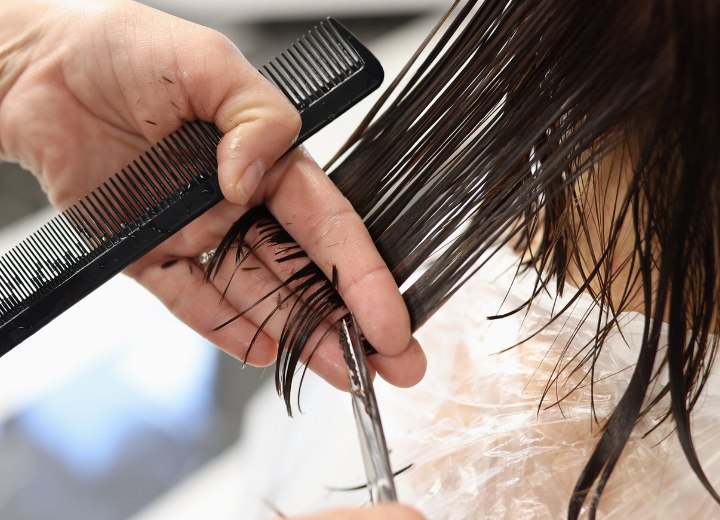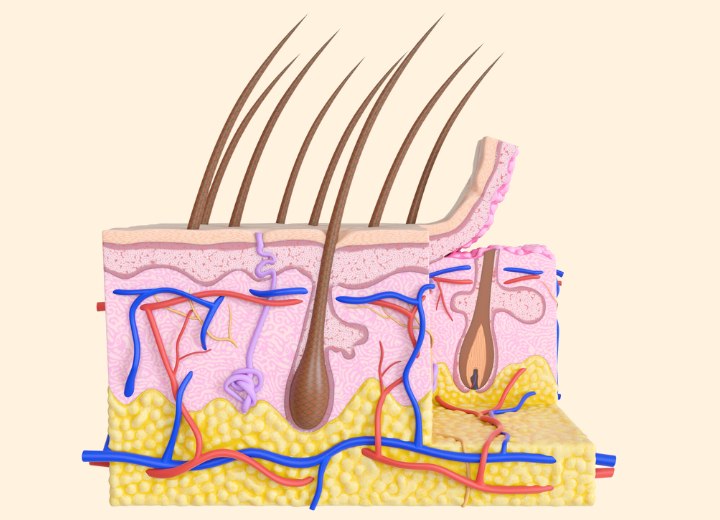Haircutting without Pain

A: When hair is cut, the absence of pain has to do with the anatomy of the hair itself. The unique anatomy of hair allows it to be cut and styled without experiencing discomfort and pain.
Nerves are responsible for transmitting signals of pain, and since hair lacks nerves, it cannot register or transmit the sensation of pain. The hair follicle, the structure beneath the skin from which a hair grows, does contain nerve endings, but these are located in the surrounding skin rather than in the hair itself. When you cut your hair, you are essentially trimming the dead, keratinized cells that are devoid of sensation.

In contrast, cutting into living tissues, such as the skin or underlying flesh, would elicit a pain response because these areas are rich in nerves and blood vessels. So, the absence of pain when cutting hair is due to the fact that hair, at least its visible part, is a non-living part of our body.
©Hairfinder.com
See also:
How fast does hair grow?
What is hair made of and how does it grow?